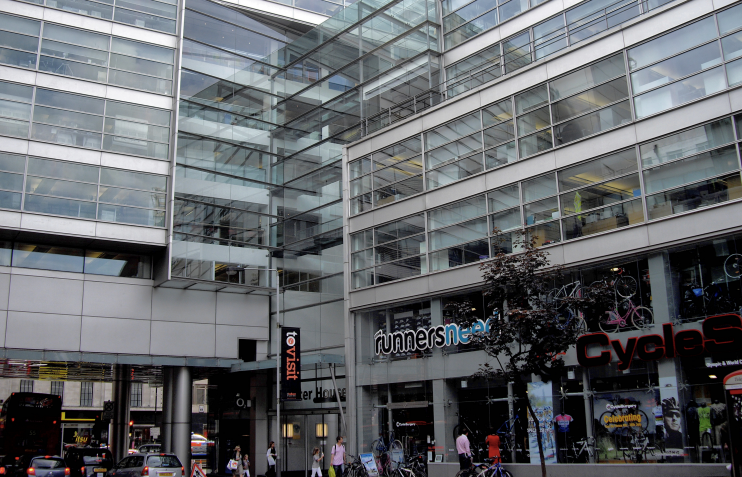Midtown
Midtown, Camden
A collective term for the Holborn and south Bloomsbury areas – and perhaps beyond

“NY Times takes space in Midtown for new HQ” ran a headline in Property Week in December 2014. This was not a reference to developments in Manhattan but to the New York Times Company’s proposed new UK headquarters at 18 Museum Street in Bloomsbury.
In a London context, the term ‘Midtown’ made its first appearance sometime around 1990. Ever since then, respected bloggers like Christopher Fowler (among many others) have been ridiculing it and insisting that it never will (or never did) catch on. And yet it refuses to go away – unlike failed inventions such as ‘Cityside’ and ‘Noho’.
The reason for its appeal to real estate developers, letting agents and property journalists is obvious: ‘Midtown’ is an internationally recognisable concept. Even if you know nothing at all about London – let alone how to spell or pronounce ‘Holborn’ – ‘Midtown’ sounds like a good place to be.
Its precise whereabouts, however, is uncertain – if one accepts that it exists at all. Having first taken root somewhere around the southern end of Procter Street, it has since expanded in all directions, but especially north-westwards and along major thoroughfares. Some extremists define Midtown as the whole area between the City and the West End.
Established in 2005, the Midtown business improvement district (BID) originally covered most of the area shown on the map below and a few parts beyond. Subsequently calling itself BEE Midtown, its remit was expanded to include St Giles, Farringdon and Clerkenwell, which is almost as big an area as that represented by the Midtown business club, which wildly asserts that “the Midtown area of London broadly extends to Euston Road in the north, the Thames in the south, Farringdon Street/Road in the east and Trafalgar Square/Tottenham Court Road in the west.”

Midtown’s biggest employers have historically been government agencies and professional services providers like insurers, lawyers, accountants and recruitment consultants – but the marketing hype has succeeded in luring more glamorous businesses, especially in the media sector.
When Midtown first began to take off, the resurgence of this often overlooked area was driven by relatively competitive rents but this advantage began to decline in the early years of the 21st century. Research conducted in summer 2014 by the property consultants CBRE revealed that Midtown was outperforming the rest of the central London leasing market. The Evening Standard’s Jonathan Prynn later proclaimed that “Midtown is boomtown” – adding that “a cluster of hip hotels, slick developments and rapidly rising rents mean the area east of Oxford Street has finally arrived.”
In 2021 the Midtown BID (aka BEE Midtown) effectively admitted defeat in its attempt to rebrand the area and instead rebranded itself – as the Central District Alliance.
Postal districts: WC1 and WC2
Further reading: Peter Watts: In defence of Midtown
